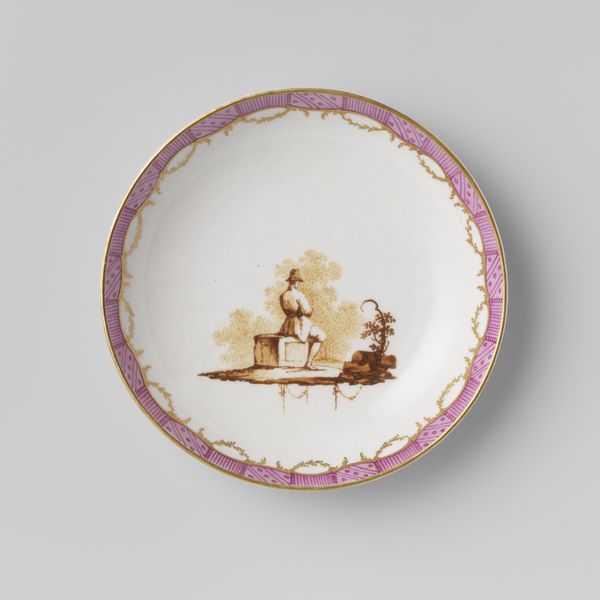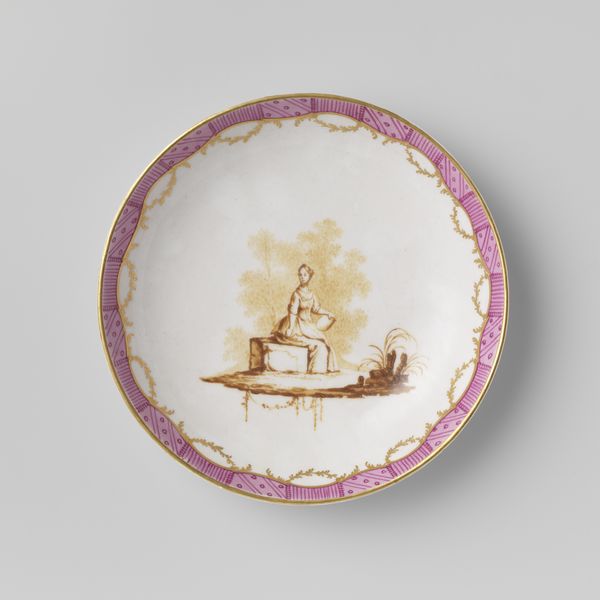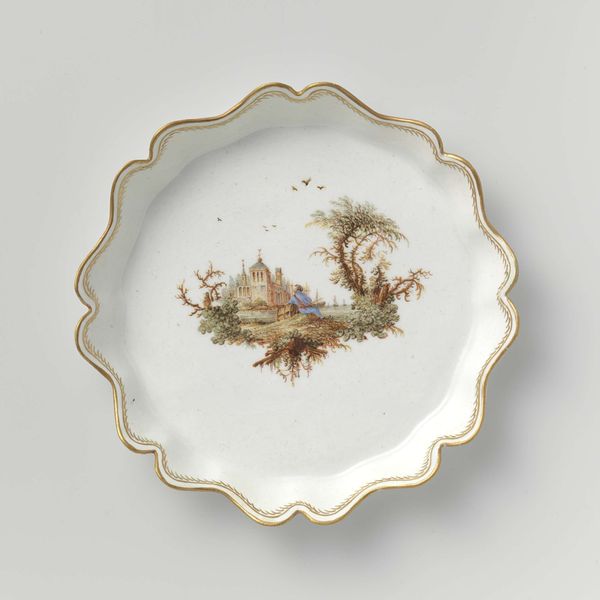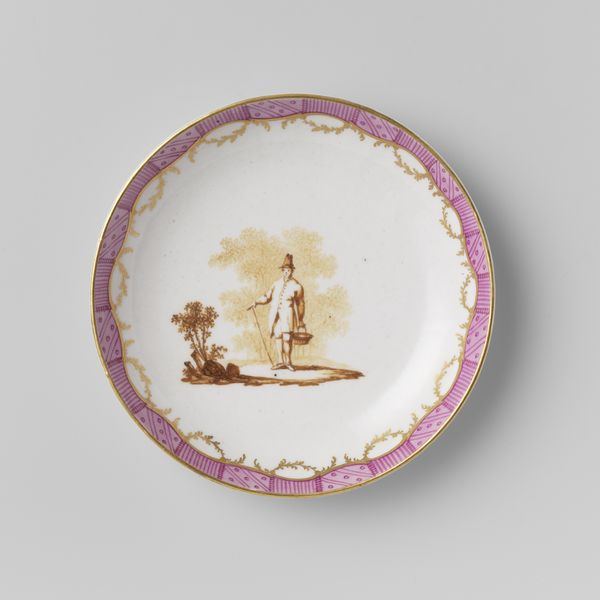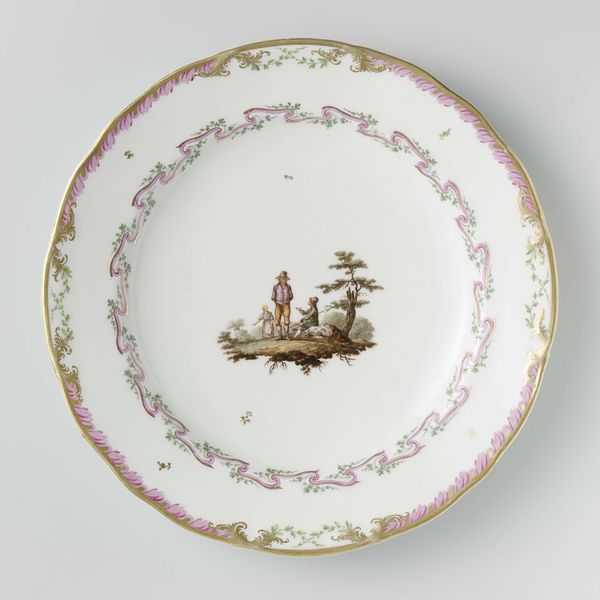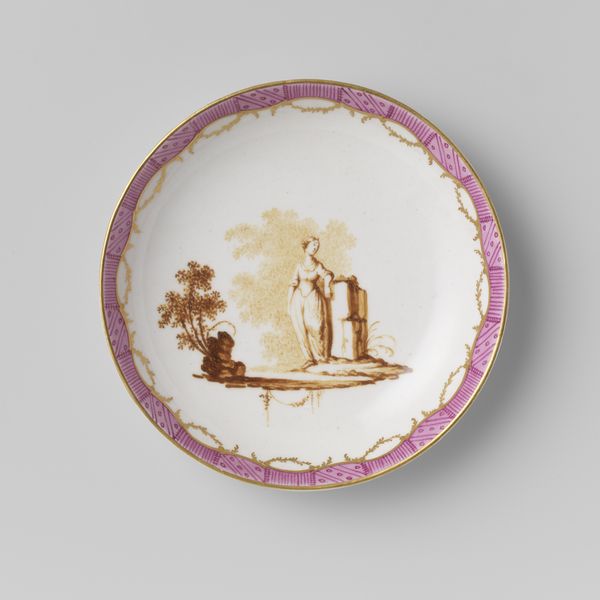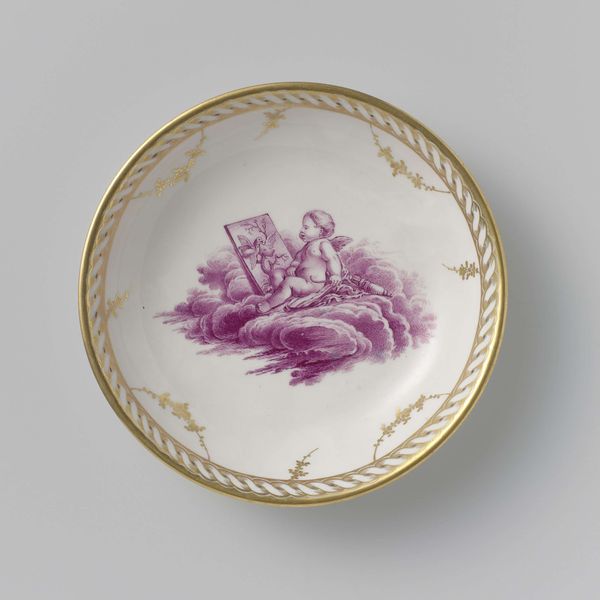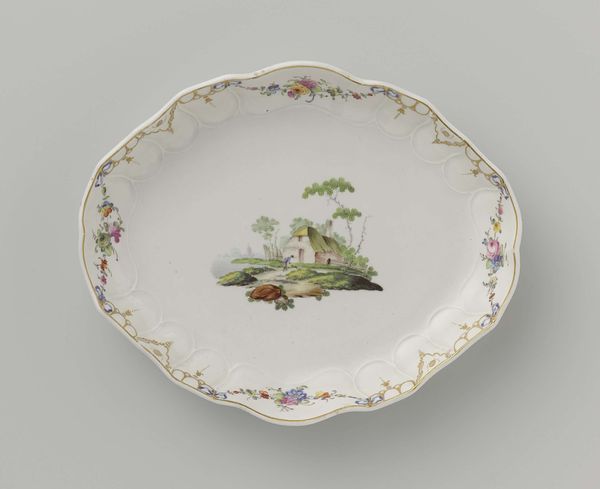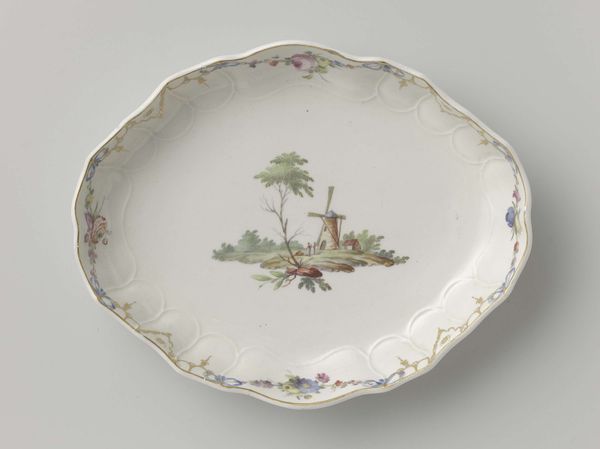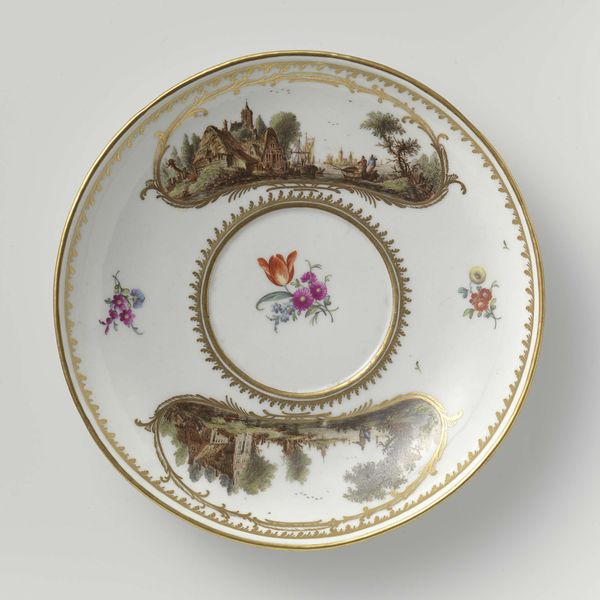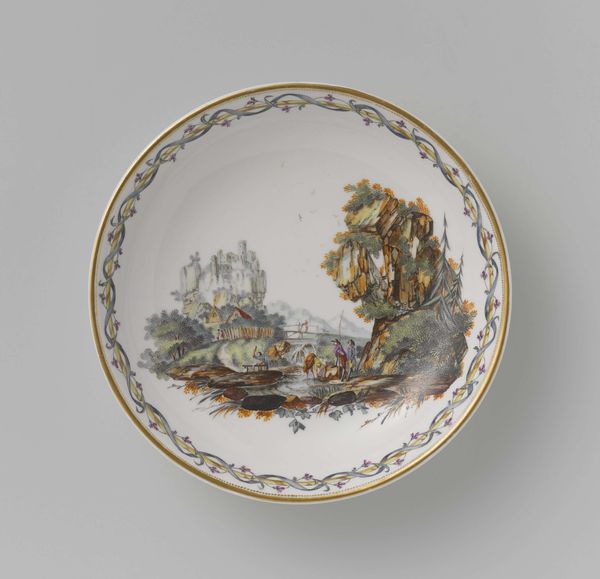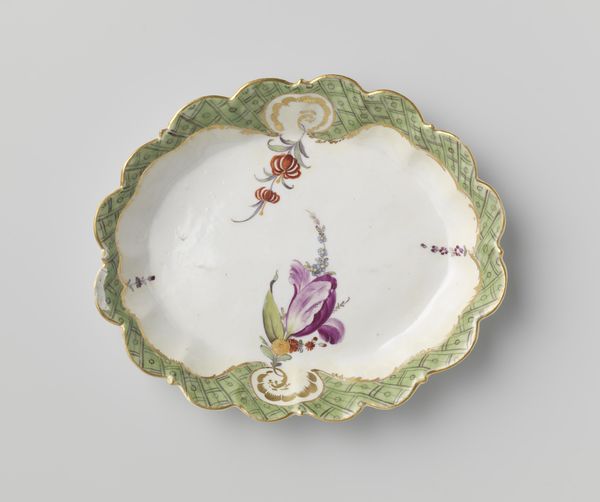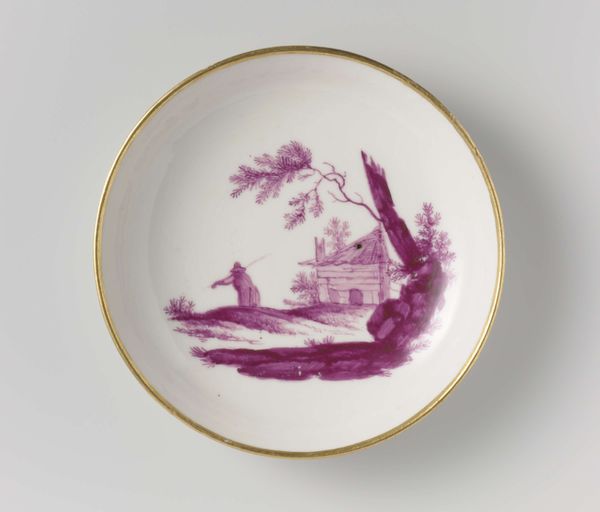
Dimensions: height 1.9 cm, diameter 19.0 cm
Copyright: Rijks Museum: Open Domain
Curator: Here we have a delicate piece from the Loosdrecht manufactory, a ceramic tea service dating from around 1774 to 1778. It's currently part of the Rijksmuseum collection. Editor: My initial impression is one of idyllic quietude. The muted brown palette against the white porcelain, framed by that ornate rim, creates a serene and somewhat romantic atmosphere. It feels incredibly delicate, almost precious. Curator: Absolutely. Consider the Rococo style, known for its ornamentation and association with the aristocracy. These pieces, though intended for use, also signaled social status. The rise of porcelain production mirrors broader societal shifts regarding consumption and class. Editor: I see the emphasis on both form and function—a duality often present in material culture. The ceramic material itself speaks to production processes of the era and the global networks for its acquisition, manufacture, and sale. How does the depiction of labor within the landscape interact with this? Curator: Precisely. We see a pastoral scene painted within the service—figures engaged in labor, set against a simplified landscape. This evokes an interesting juxtaposition, an almost nostalgic look at the natural world idealized upon a product meant for everyday consumption. Editor: It does, there's a layer of fantasy here. The meticulous crafting of the ceramic form speaks to the skill involved in its production. It represents an almost celebratory aspect to its artisanal history. I mean look at that scalloped edge and carefully considered coloring and detailing. It all alludes to luxury labor for those wealthy enough to enjoy tea. Curator: Precisely. This tea service can speak to so much, the complexities surrounding art and commerce to labor practices of the time. The decorative elements can symbolize leisure and wealth. It challenges conventional thought by placing the domestic squarely inside socio-political thought and even history! Editor: Exactly, a tangible representation of consumption, labor, class, and social stratification within the framework of one pretty piece! Curator: Indeed! It underscores art and how such an intricate historical landscape could still impact artistic material narratives even now!
Comments
rijksmuseum about 2 years ago
⋮
Tea services represented a significant part of the production of the Loosdrecht porcelain factory. On display here are a teapot, milk jug and sugar bowl along with other less familiar parts of a tea service, such as a slop bowl, which is used to rinse and warm the cups between two ‘courses’, and a drip catcher (pattipan), which catches the drips from the spout of the teapot.
Join the conversation
Join millions of artists and users on Artera today and experience the ultimate creative platform.
